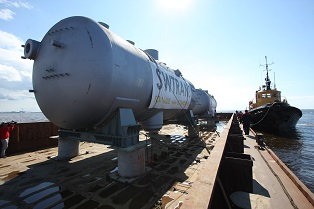Although the size and longer operating life of the Zion Nuclear Power Station resulted in greater activation of the reactor components compared to previous projects, license transfer and cold-cutting methods being used to segment the reactor vessels and internals have helped cut 10 years off the original schedule.
The decommissioning of nuclear plants has developed into a mature industry in the U.S. It started in the 1960s with the dismantling of low-power prototype and test reactors originally built to demonstrate nuclear power feasibility. Large-scale decommissioning projects began in the 1980s with Shippingport, followed by several others in the next decade.
The visual markers of a decommissioned site that still remain typically include support buildings and security fences surrounding large Nuclear Regulatory Commission (NRC)-approved casks containing spent fuel located inside the site’s independent spent fuel storage installation (ISFSI). The ISFSIs have become individual de facto repositories resulting from the absence of a geologic repository, such as the proposed Yucca Mountain site (see “The U.S. Spent Nuclear Fuel Policy: Road to Nowhere” in the May 2010 issue and “The U.S. Spent Nuclear Fuel Policy, Part 2: Playing Hardball” in the November 2011 issue of POWER online at powermag.com).
Zion Decommissioning Strategy
After more than 20 years of operation, Unit 2 of the Zion plant, located on the shore of Lake Michigan, was prematurely shut down on Sept. 19, 1996, followed by Unit 1 on Feb. 21, 1997. Operations were terminated on Jan. 15, 1998, and were officially confirmed with a permanent cessation of operations letter submitted on Feb. 13, 1998. Commonwealth Edison, owner of the plant at the time, concluded that the continued operation of Zion (Figure 1) was not financially feasible, removed the plant from service, and started the decommissioning process.
After the Zion fuel was transferred to the spent fuel pool, the certification of fuel transfer was submitted to the NRC on Mar. 9, 1998. That was followed by the post-shutdown decommissioning activities report, site-specific cost estimate, and fuel management plan on Feb. 14, 2000. Submittal of the license termination plan is scheduled to occur in 2015, with a final site survey and license reduction to the ISFSI expected during 2018.
Originally, the Zion units were placed in SAFSTOR status, one of the NRC’s approved decommissioning strategies. With this option, the facility is maintained and monitored in a condition that allows the radioactivity to decay; afterwards, it is dismantled and the property is decontaminated. The Zion reactors were unique due to the longer operating life of both units, resulting in greater activation of the reactor vessels and internals. Field operations were not expected to start until 2015, and complete site restoration was planned for 2028 as reported in the post-shutdown decommissioning activities report submitted on Feb. 14, 2000.



































